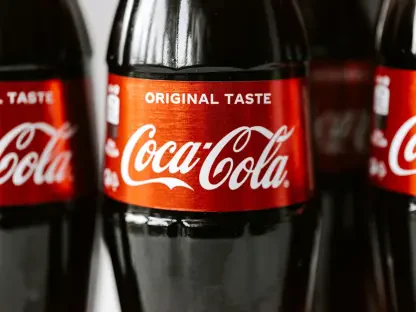In a compelling and unified call to action, prominent occupational safety organizations have issued an urgent plea to the United States Congress and the White House to safeguard funding for essential safety agencies. These groups, representing a broad spectrum of expertise in workplace protection, are sounding the alarm over the potential consequences of budget cuts or government shutdowns on agencies such as the Occupational Safety and Health Administration (OSHA), the National Institute for Occupational Safety and Health (NIOSH), and the Mine Safety and Health Administration (MSHA). These entities play a crucial role in protecting millions of workers by establishing safety standards, conducting inspections, and enforcing regulations across diverse industries ranging from construction to healthcare. The coalition behind this appeal warns that any disruption to their operations could jeopardize the well-being of countless employees, exposing them to preventable risks. Emphasizing that worker safety is a non-negotiable priority, these organizations are pushing for immediate attention from policymakers to ensure that political disagreements do not undermine public health. This pressing issue transcends partisan lines, highlighting a critical need to prioritize human lives over budgetary disputes at a time when the threat of funding impasses looms large.
Vital Functions of Safety Agencies
The cornerstone of workplace protection in the United States lies in the relentless efforts of safety agencies like OSHA, NIOSH, and MSHA. These organizations are tasked with developing and enforcing safety standards that prevent accidents, approving critical protective equipment, and ensuring that employers adhere to regulations designed to minimize workplace hazards. Their work is indispensable in maintaining safe environments for employees across high-risk sectors. For instance, OSHA’s inspections help identify unsafe conditions on construction sites, while MSHA’s oversight ensures that miners are not exposed to dangerous underground conditions. Without the consistent operation of these agencies, countless workplace dangers could go unaddressed, leaving workers vulnerable to injuries or worse. The safety community argues that the absence of such oversight would dismantle the protective framework that millions rely on, emphasizing the need for uninterrupted support to sustain these vital functions.
Beyond their immediate regulatory roles, these safety agencies also contribute to long-term public health by researching emerging workplace risks and developing innovative solutions through entities like NIOSH. Their efforts extend to approving life-saving gear and providing training resources that empower employers and employees alike to foster safer work cultures. The impact of their work is evident in the reduced rates of workplace incidents in industries that once faced staggering injury numbers. However, any lapse in their operations could reverse these gains, allowing hazards to proliferate unchecked. Safety organizations stress that funding these agencies is not merely a budgetary line item but a commitment to preserving human life and dignity across the workforce, urging policymakers to recognize the profound implications of their decisions on everyday workers.
Threats Posed by Funding Disruptions
The specter of a government shutdown or funding deadlock presents a grave threat to the operational integrity of safety agencies, as highlighted by the coalition of safety groups. Should funding for OSHA, NIOSH, and MSHA be interrupted, essential activities such as workplace inspections and the approval of protective equipment would grind to a halt. This disruption could result in unaddressed hazards, leaving employees exposed to risks that might otherwise have been mitigated through timely intervention. The consequences of such a scenario are particularly alarming in high-risk industries where safety oversight is a daily necessity. The safety community warns that even a temporary suspension of agency operations could lead to a spike in preventable accidents, underscoring the immediate danger posed by political inaction.
Moreover, the ripple effects of a funding impasse extend beyond the immediate cessation of inspections and approvals. A government shutdown could delay the enforcement of critical safety regulations, eroding trust in the systems designed to protect workers. The coalition poignantly argues that political gridlock should never be allowed to compromise human safety, pointing out that shutting down government functions does not equate to safer workplaces. This concern is amplified by the potential for such disruptions to occur during periods of heightened risk, such as extreme weather conditions or industrial peak seasons, when the need for oversight is even more critical. The urgency to prevent such outcomes drives the call for sustained funding, ensuring that safety agencies remain equipped to respond to workplace challenges without delay.
Imperative for Uninterrupted Fiscal Support
The safety community has made an impassioned appeal to Congress and the White House to secure fiscal 2026 appropriations without any reductions to worker safety programs. This request is framed as a bipartisan imperative, cutting across political divides to focus on the fundamental importance of public health and safety. The timing of potential funding disruptions adds a layer of urgency to this plea, as a shutdown could coincide with seasons of increased workplace hazards, such as harsh winter weather or intense industrial activity. Such alignment would exacerbate risks for workers already in vulnerable positions, making the need for continuous funding not just a policy concern but a pressing humanitarian issue. The coalition urges lawmakers to act swiftly to prevent any lapse in support for these critical agencies.
Additionally, the call for uninterrupted funding reflects a broader recognition of the interconnectedness between government stability and workplace safety. Safety organizations emphasize that budget negotiations should not come at the expense of programs that directly impact the lives of millions. The potential for delayed safety interventions or halted research into workplace hazards could have long-lasting repercussions, undermining years of progress in reducing occupational injuries. By prioritizing funding for safety agencies, policymakers can demonstrate a commitment to safeguarding the workforce, ensuring that employees in every sector can perform their duties without fear of preventable harm. This appeal serves as a reminder that fiscal decisions carry profound implications for the nation’s most essential workers.
Strength in Unified Advocacy
A remarkable aspect of this urgent appeal is the diverse coalition of safety organizations standing together to advocate for worker protection. Groups such as the International Safety Equipment Association (ISEA), National Safety Council (NSC), American Industrial Hygiene Association (AIHA), and American Society of Safety Professionals (ASSP) bring a wealth of expertise in areas like safety equipment standards, industrial hygiene, and professional safety practices. Their collective voice amplifies the importance of maintaining funding for safety agencies, sending a powerful message to policymakers about the shared priority of protecting workers. This united front demonstrates a rare consensus within the safety community, highlighting that the issue transcends individual organizational goals and focuses on a common mission.
The strength of this coalition is further underscored by statements from leaders like ISEA President Cam Mackey, who asserted that “worker safety cannot wait.” Such declarations encapsulate the resolve of these groups to push for immediate action, ensuring that political delays do not jeopardize essential safety operations. By aligning their efforts, these organizations not only enhance their influence but also provide a comprehensive perspective on the multifaceted nature of workplace safety. Their collaboration serves as a model for how collective advocacy can drive policy change, urging Congress to prioritize funding stability for agencies that are critical to the well-being of the nation’s workforce. This unified stance reinforces the gravity of the situation and the need for swift governmental response.
Wide-Reaching Consequences for Workers
The potential disruption of safety agency operations would have far-reaching consequences for a diverse array of workers across the United States. From oil field roughnecks facing harsh conditions to nurses navigating high-stress hospital environments, countless individuals in hazardous or demanding roles depend on government-backed protections to perform their jobs safely. The absence of regular inspections or updated safety protocols could expose these workers to risks that might otherwise be mitigated, increasing the likelihood of injuries or fatalities. The coalition emphasizes that no employee should face heightened danger due to political inaction, drawing attention to the universal importance of robust safety oversight in every industry.
Furthermore, the impact of funding disruptions would disproportionately affect those in high-risk occupations, where the margin for error is often razor-thin. Construction workers, for example, rely on OSHA’s vigilance to ensure safe working conditions at elevated heights, while miners depend on MSHA to monitor for toxic exposures underground. Without consistent agency support, these workers could face dire consequences, with ripple effects extending to their families and communities. The safety community’s plea underscores the interconnected nature of workplace safety and societal well-being, urging lawmakers to consider the human cost of budgetary delays. Protecting these diverse workforces is not just a regulatory obligation but a moral imperative that demands unwavering commitment from all levels of government.
Path Forward for Policy Action
Reflecting on the fervent advocacy from safety organizations, it becomes evident that the risks of funding disruptions to agencies like OSHA, NIOSH, and MSHA have captured significant attention among policymakers. The coalition’s unified voice resonates in discussions about fiscal priorities, shedding light on the tangible dangers faced by workers when safety oversight falters. Their efforts highlight a critical intersection between governmental decisions and public health, prompting serious consideration of the consequences of inaction. The message that political disputes should not undermine worker protections has been delivered with clarity and urgency, setting the stage for meaningful dialogue.
Looking ahead, the path forward demands concrete steps to ensure that safety funding remains intact for fiscal 2026 and beyond. Lawmakers are encouraged to establish mechanisms that shield safety programs from the volatility of budget negotiations, perhaps through dedicated funding streams or emergency provisions. Additionally, fostering bipartisan collaboration could help build a consensus around the non-negotiable nature of workplace safety, ensuring that these issues remain above partisan fray. The safety community’s advocacy serves as a catalyst for reimagining how government priorities can align with the protection of the nation’s workforce, offering a blueprint for sustained commitment to public health and safety in the years to come.









